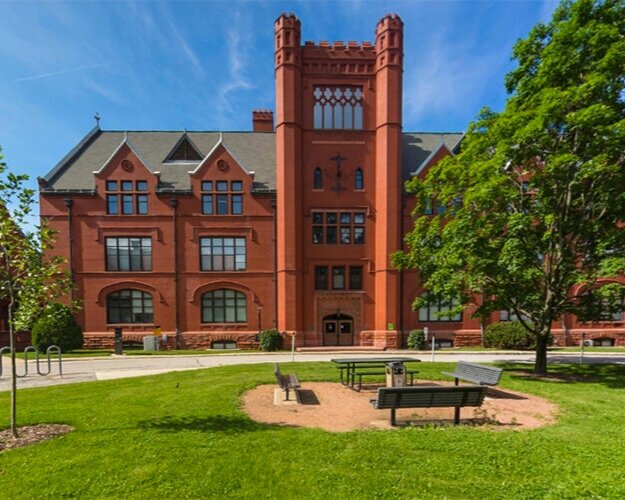
Merrill Hall, Hartford Ave, University of Wisconsin – Milwaukee
It was 1993 and I was a freshman at UWMilwaukee. All students at the time had to take a certain number of cultural classes with Black Realities being highly encouraged. Mary, a teammate friend, and I decided to take it together. Every Tuesday evening, we’d file into the basement room of a hall near the student union.
The first night of class our professor walked in – a 6 foot 5 inch linebacker of a black man dressed in a sharp suit. He had a low, clear voice, and when he spoke I hung on every word. Throughout the semester, my mind was challenged in what it had previously been taught – that desegregation was the answer, that the Civil Rights Movement had succeeded, and that life for the Black person was equal. I found these evenings together helpful because I constantly felt confused. My history textbooks taught me one thing, while real life was teaching me something very different. My Black Realities Professor helped to debunk much of what I had previously learned, or more accurately stated, not learned at all.
I watched as students disagreed with him honestly and openly. He would engage them in a discussion throwing both HIS LIVED experience in conjunction with a new historical perspective. Mary and I chose to sit quiet in class and observe. I learned more from these conversations regarding race and the lived Black Reality than I had in my young 19 years of life. After every class, Mary and I would walk back to our dorm dissecting the last hour, word by word.
The evening of our final exam arrived. We sat down, eyes darting around the room anxiously as we waited for our professor, who was uncharacteristically late. Upon his arrival, he brusquely passed out a 5 page multiple choice test, told us where to put it when we had completed it, turned and left the room. We began paging through the test questions, feeling a collective tension beginning to mount. When it became clear he was not coming back, people became animated: “Hey, we never learned this! Does anyone know what this answer is?” Mary, who was not used to not knowing the answer, began to worry. “Molly, I don’t know this. What the hell is this?” It was then that I began to understand. This professor was not testing us on what we knew, he was showing us all that we did not know. Each question was related to a Black Person or Black Event in our shared United States History. This was his final lesson to us – how little we actually know about Black History, and the lived reality of Being Black in America.
To this day, I carry a deep gratitude in my heart for my gentle giant professor. This class planted the small seed of social justice that has been growing within me ever since. I learned more from him about what I do not know, and how important it is to listen to learn. And to challenge the status quo.
>
“Won’t it be wonderful when black history and Native American history and Jewish history and all of U.S. history is taught from one book. Just U.S. history.”
View comments
+ Leave a comment